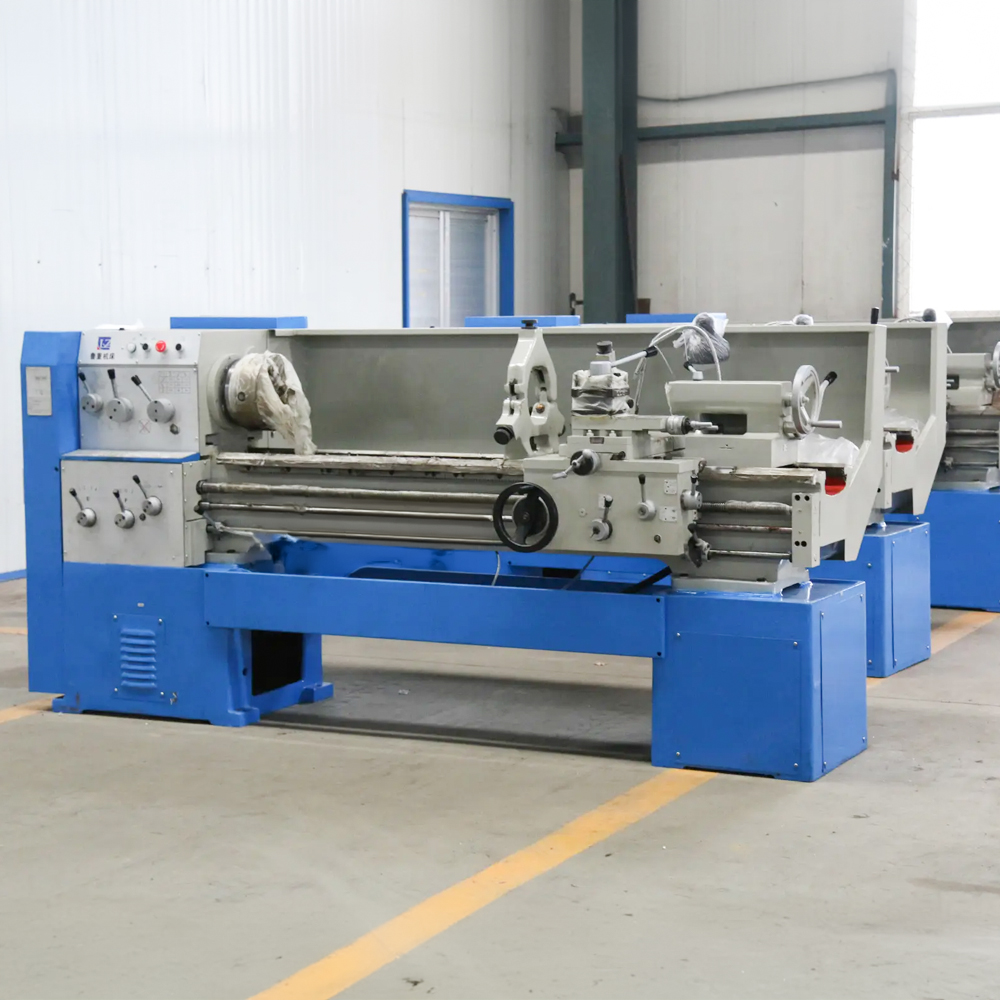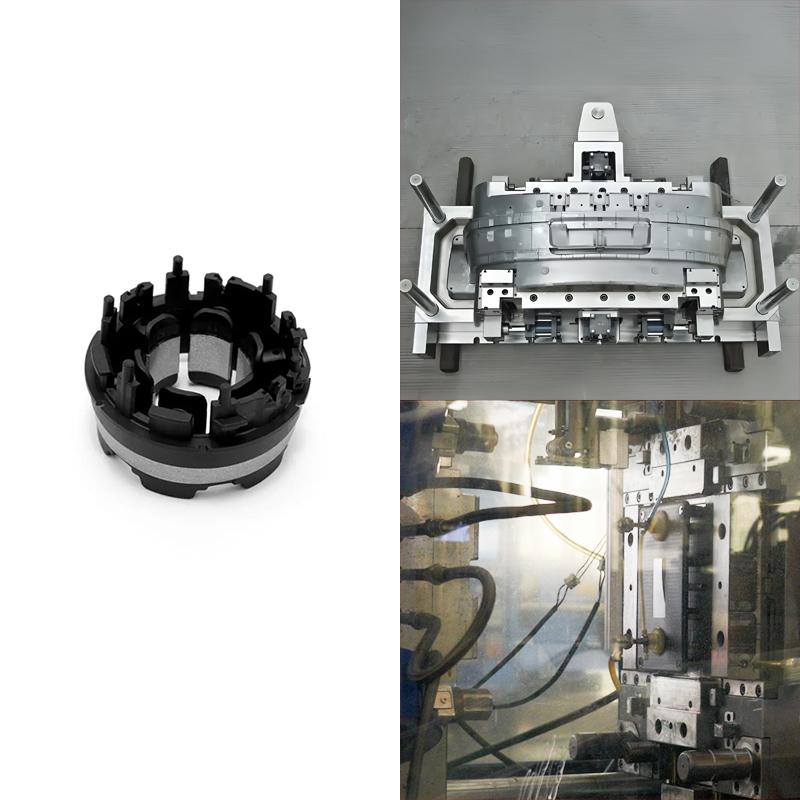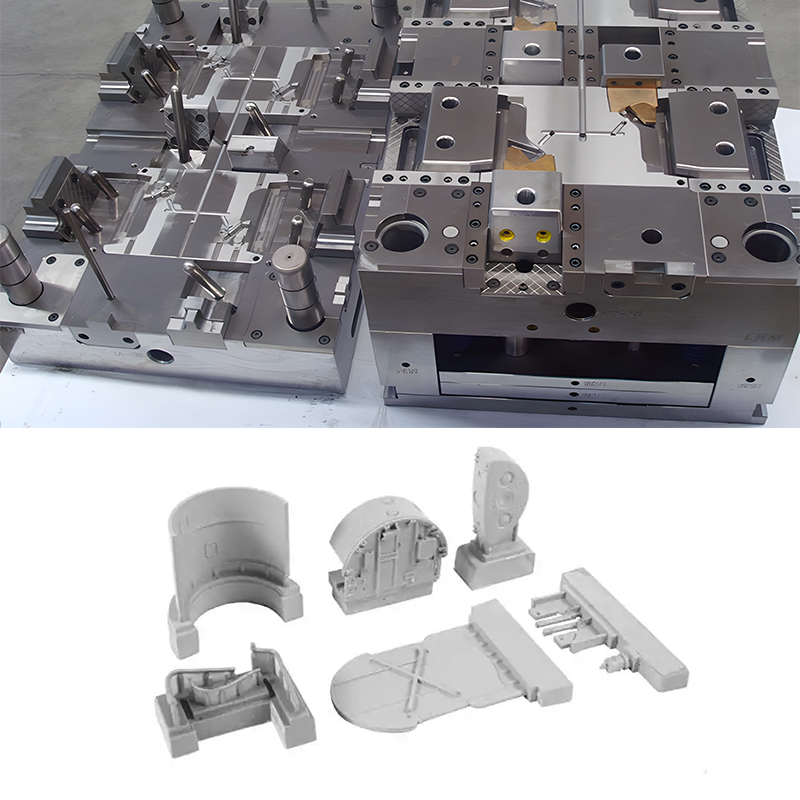A lathe machine, also known as a turning machine, is a tool used in manufacturing and machining. It rotates the workpiece around a fixed cutting tool. This rotation helps with precise turning, boring, cutting, and shaping the workpiece.
Conversely, lathes manufacture symmetrical products such as cylinders, cones, and geometrical figures. The workpiece on the turning machine is securely fixated on a spindle or chuck and rotates. At the same time, the cutting tool is placed at different angles to shave off the material required to reach the final shape.
The cutting tool can be set to different depths and angles to offer various operations such as turning, drilling, threading, and facing.
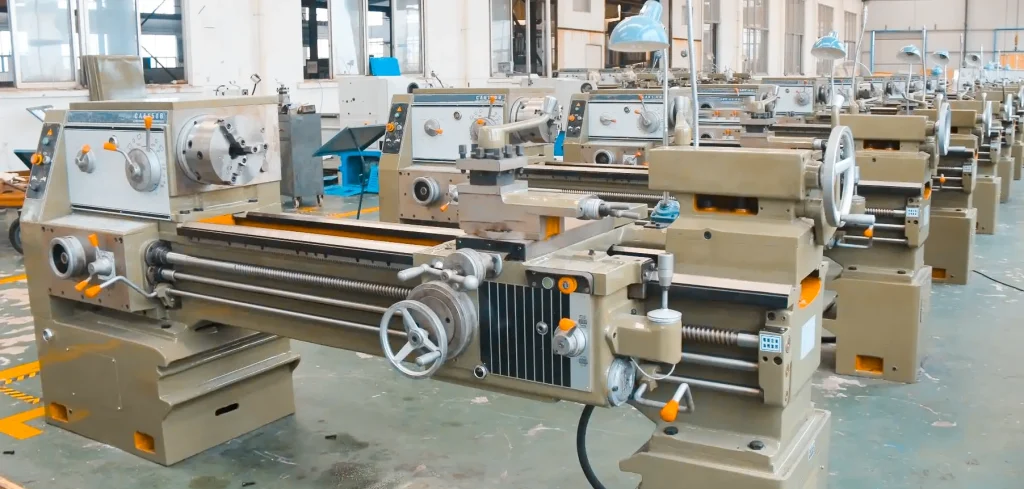
Different Types of Lathes Machines with Different Functions.
These machines are classified according to their structure, operation, and intended purpose. It is essential to understand that every kind of lathe has advantages and can be used in other production applications.

1. Engine Lathes
These machines revolve a block of material on a horizontal axis. The tool, held vertically, cuts the material, allowing for the development of complex forms and exact scales. The primary function of an engine lathe is to rotate the job to obtain different forms, such as cylindrical, conical, or spherical.
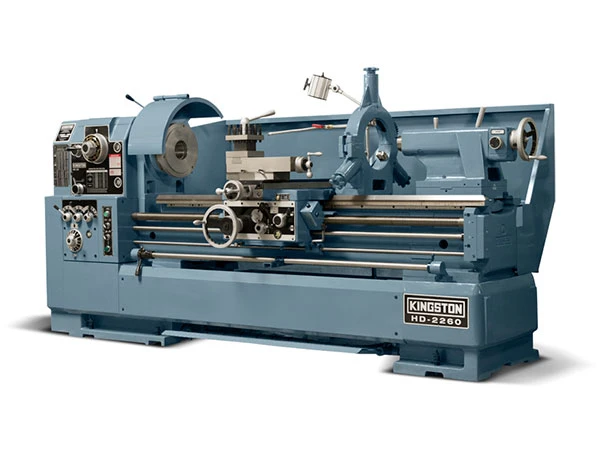
Functions of Engine Lathes
The primary process on engine lathes is turning. However, other processes are possible as well. Turning is a process where the workpiece rotates on its axis. Meanwhile, a cutting tool shapes its outside periphery to form various shapes, such as cylindrical and conical. This operation is crucial in machining as it helps in making various shaped and sized parts.
The other essential operation is facing, and this is also done effectively and efficiently on the engine lathes. The first step in this operation is to saw the surface at the end of the workpiece where the face is situated. This action makes the surface parallel to the required orientation, creating an actual face.

Machining on an engine lathe also creates holes in the workpiece through drilling, a common activity in most material removal techniques. To perform this operation, hold the drill bit with the tailstock or spindle. Then, apply pressure to form a hole in the material. Other secondary operations like reaming or tapping can be performed depending on when one wants to establish the hole dimensions.
Advantages of Engine Lathes
There are several benefits of engine lathes. First of all, the application of the engine lathes has a unique feature that lies in flexibility. This is one of the ways through which engine lathes are distinguished because they are capable of performing several operations, including turning and facing, drilling, and threading. This adaptability increases their suitability for use in multiple practices in different fields. Additionally, they can also work with different material types.
Any job that has to do with the machining of industrial equipment or any mechanical assembly that involves metal parts often requires flexibility, which is a notable advantage of using engine lathes. There is also another advantage of the engine lathes. When appropriately equipped and set with tools and configurations, they boast of high accuracy. They can provide a very fine surface finish on the parts that are being machined. This specificity is important, especially in industries where accuracy is enhanced, such as the aviation industry, car manufacturing industries, and equipment used in the medical field.
Another considerable advantage of engine lathes is their ability to save money during production. Their relatively low price allows them to come with an adequate list of features and functions necessary for various machining operations. This cost advantage allows small and independent workshops to invest in multifunctional and competent equipment. As a result, they can enhance production efficiency and reduce expenses without the burden of heavy capital expenditure.
2. Turret Lathes
Design and Functionality
Turret lathes feature a rotating turret that can be regarded as a special clamp for tool holding, containing several cutting tools simultaneously. This particular design allows the turret to index with different tools. It enables efficient and fast tool changes during milling operations. Therefore, turret lathes are especially useful for conducting a sequence of operations on a single part without requiring tool changeover by hand.
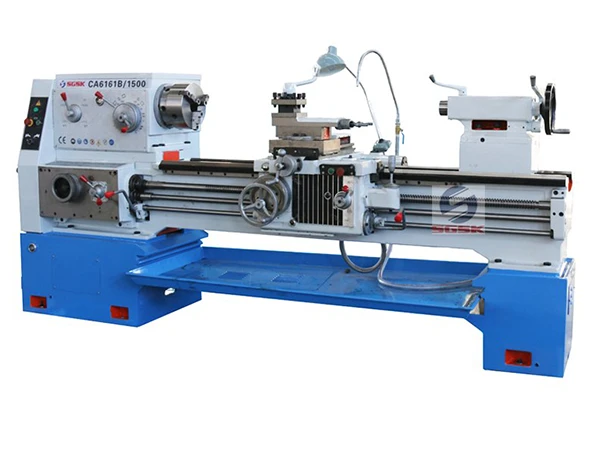
Automatic Tool Change
These lathes complete several fundamental processes that improve their functionality in machining operations. The automatic tool change and elaborate turning activities are of significant value because they efficiently reduce unnecessary steps and execute complicated tasks. Automatic tool change is one of the essential functions, dramatically enhancing a turret lathe’s efficiency. The tool-change feature lets turret lathes switch necessary tools for cutting, drilling, or other processes. This happens during the operation without requiring physical intervention. Besides saving time on tool changes, this automation guarantees that each change’s position matches the corresponding operation’s requirements. Using an automatic tool changer increases the productivity of the machining phase. It also shortens cycle times, which improves the standard and quality of the product.
Complex Turning Operations
Turret lathes perform complex turning, indicating the versatility of turret lathes in various operations. The lathe can perform other operations like drilling, reaming, and threading within the same setup instead of putting the workpiece in a different position. Complex turning differs from individual operations because it combines them into a single continuous process. This approach eliminates the need to remove the workpiece from the lathe. As a result, there’s no need to reposition the workpiece or re-establish the tool path, saving significant time and effort. This approach speeds up the production processes. It also enhances precision in fabrication because the workpiece remains in position during multiple operations.
Benefits in Precision Manufacturing
The ability to perform multiple cutting operations is especially beneficial. It helps produce demanding parts where many cross-sectional edges and other characteristics must be easily fashioned. For instance, in manufacturing precision shaft or threaded parts, complex turning can do all the contouring of the part to subtle detail, as this makes a quality product in the process.
3. CNC Lathes
CNC lathes are an advanced category of lathes. They operate through computer numerical control (CNC), which allows for highly precise machining processes. These advanced turning machines function through commands that are fed into the machine. They can do the work with great precision and accuracy. At such a level of control, the complexities of work that are tiresome and almost near impossible to accomplish without the application of technology can be automated.
CNC lathes can carry out programmable operations. This capability allows the machine to accomplish several machining processes with enhanced precision. It makes the machine suitable for developing parts with stringent and intricate requirements. CNC turning machines are also capable of multi-axial operations. These include turning, drilling, or milling, and they operate on the workpiece simultaneously.
This approach also aids the manufacturing process. Additionally, it reduces the need to transfer workpieces from one machine to another, which enhances overall efficiency. CNC lathes are perfect for use in situations where the accuracy of the part that needs to be produced, as well as the shape of the part, is very complex.
In the aerospace and automotive industries and the manufacture of medical devices, CNC lathes are used to produce parts with tight tolerance levels. The benefits, such as repeatability and accuracy, make the CNC turning machines vital in these sectors.

4. Bench Lathes
Bench lathes are multipurpose and used for cutting a wide range of components. They are also used where space for work is limited and cutting work must be precise. They are smaller in size and lighter in weight than the big industrial turning machines. Besides, they can be easily mounted on a bench or a stand. Bench lathes are miniature versions of lathes and are as applicable in specific applications as lathes.
Bench lathes have two primary operations: precision turning and precision boring. They can be used for jobs requiring a delicate and accurate feel. Whether for a gondola of an electronic product, a fine handle of an instrument, or even the prototypes, bench lathes are precise enough to meet the requirements and do it properly.
These include working with small pieces and delivering very high tolerance. This capability is particularly relevant in industries where product quality relies on the precision of the machines.
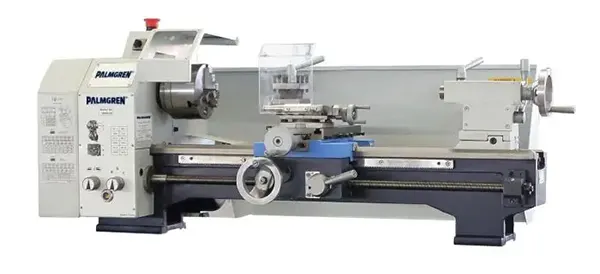
Optimizing Lathe Machining Efficiency
Optimizing lathe machining is, therefore, a package of best practices and techniques for maintaining turning machines. Here are some key strategies:
1. Tool Selection and Maintenance
Different cutting tools, such as carbide for high-speed and HSS for general operation, should be used for lathe operations. Maintenance is essential in production. Therefore, practicing sharp tools for clean cutting, less cycle time, and freedom from defects is vital. Well-maintained tools also help reduce the frequency of tool and machine replacement, thus saving costs in the long run. Inspection of tools for wear and replacement as appropriate is essential for uniformity in results and high levels of production in machining processes.
2. Workpiece Setup
Correct positioning of the workpiece relative to the cutting tool is critical in turning machine operations to produce quality parts. The first step is to ensure the workplace is well secured to the lathe chuck by tightening the clamping lever to ensure that it has a firm grip on the workpiece to reduce vibration during turning, improve precision, and lessen the dangers of slipping and causing injuries. The slightest deviation can result in chatter that hampers the surface finish process and poses a higher risk of harming the workpiece or the cutting tool. Special care has to be taken during clamping to ensure that mistakes such as eccentricity where the workpiece rotates at the wrong center do not occur.
3. Optimizing Cutting Parameters
This makes it very important to find the correct cutting parameters that are efficient enough to maximize productivity while at the same time offering durability to the cutting tools that are utilized in the machining processes. Through proper choice of the cutting speed and feed rate, the material removal rate, as well as the wear rate of the tool, can be well balanced. Running the tool at a very high rpm is not good because it causes too much heat build-up and friction, leading to the early failure of the tool, while a deficient speed reduces the machining efficiency.
4. Coolant and Lubrication
Adequate coolant and lubricant are crucial to the effectiveness and durability of lathe operations. Choosing the right kind and quantity to minimize heat production in cutting is vital, as it eliminates tool degradation due to heat and constant use. Coolant also helps maximize industry production efficiency through adequate chip removal. Using coolant is also essential to minimize chip accumulation that may hinder the efficiency of the workpiece or the tool.
Wnioski
All the lathes designed are specially meant to perform specific works depending on the type of jobs required in turning operations for workpieces of various complexity, volume, and precision.
Engine lathes – it is their flexibility.
Turret lathes – their capacity for high production volumes.
Bench lathes – their capability when it comes to intricate small parts.
Collet lathes – it is ultra-accurate clamping, knowledge of these differences is undoubtedly essential for manufacturers.
By choosing suitable turning machines that address their specific areas of application, producers of parts and other related products will be able to improve their operations, optimize their output, and reap consistent benefits associated with the status of well-run and highly efficient manufacturing companies.
